Behind every innovative toy, luminous decoration, or festive packaging lies an original idea that deserves protection. The holiday season, a fertile time for creativity, is also a key moment to secure your innovations.
Patents, trademarks, and designs: industrial property offers tools suited to showcasing and defending your seasonal creations
As with every year-end, no one can escape the magic of Christmas. Between the tree, decorative garlands, gifts for young and old, festive meals, or even the Advent calendar to help the time pass, there is something for everyone — and even for… industrial property.
And yes, industrial property is present in every aspect of our daily lives, even as the seasons go by.

This was notably illustrated by Mariah Carey who, in 2021, sought to file the trademark The Queen of Christmas with the USPTO[1]. Alas for her, two other artists opposed the application, which led to a refusal by the USPTO.
Without further delay, here is an anthology of patents, patent applications, designs and models, and trademarks relating to Christmas, whose existence you may (or may not) have been unaware of.
And we begin with decorations. Indeed, what would Christmas be without the tree, snowmen, garlands, and other lights that brighten the cold December nights?
Christmas Decorations
Let us begin this inventory with the emblem of Christmas… the tree.
International application WO0044265A1, published in 2000, concerns an artificial Christmas tree — but not just any tree… a Christmas tree having supporting elements designed to hold various objects and decorative items so as “to attract customers’ attention and arouse their interest in purchasing within a warm atmosphere.”[2]
Nevertheless, a tree with so many elements can “also present a non-negligible risk of injury or accident for passers-by”[3]. This problem is, of course, overcome by the invention thanks to the way the support elements are fixed, which makes it possible to have an attractive tree with greater safety.
Innovative idea or simply a combination of a Christmas tree and an IKEA piece of furniture — you be the judge!
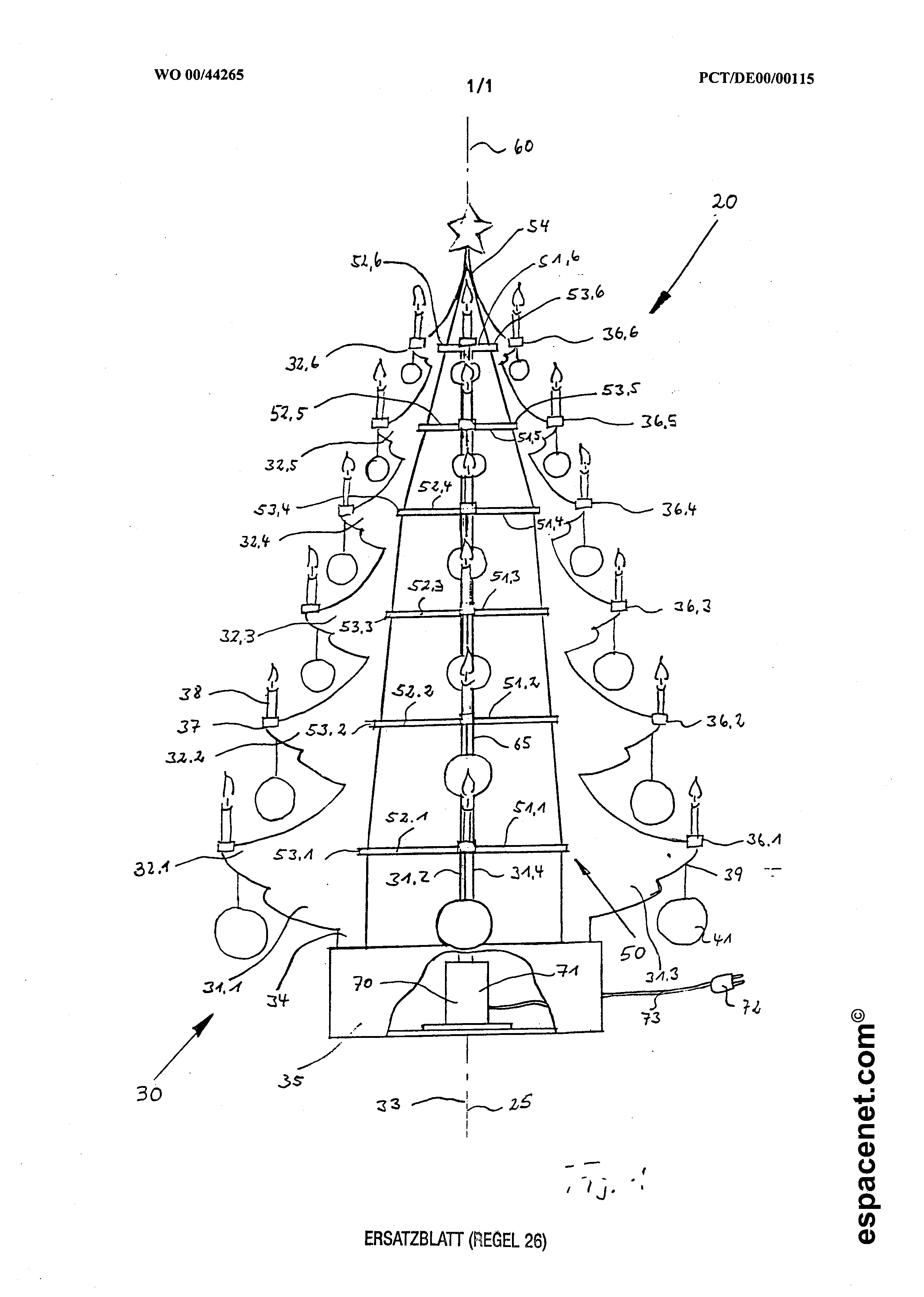
If this Christmas tree is not to your taste, industrial design USD669813S, published in 2012, may appeal to many people for its originality and practicality.
This design depicts a tree adorned with a garland and… bottles — enough to get your guests talking on Christmas Eve.
Now that we have a Christmas tree, time for the decorations! (And no need to call Valérie Damidot — industrial property is here for you.)
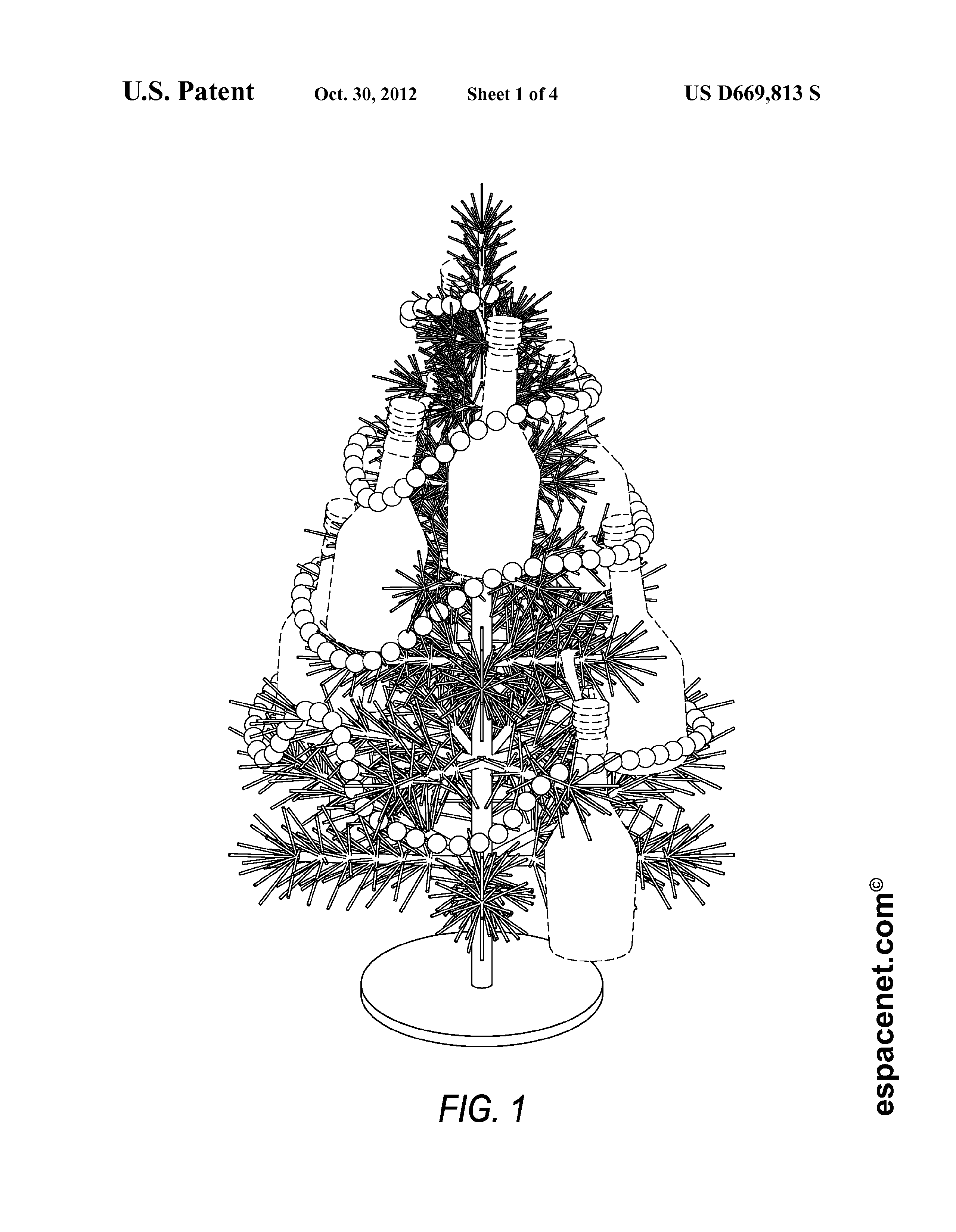
Patent US6273584B1, published in 2001, concerns a light garland with the particular feature of being tree-shaped.
It consists of a central post together with various supports allowing the mesh-shaped light garland to be installed.
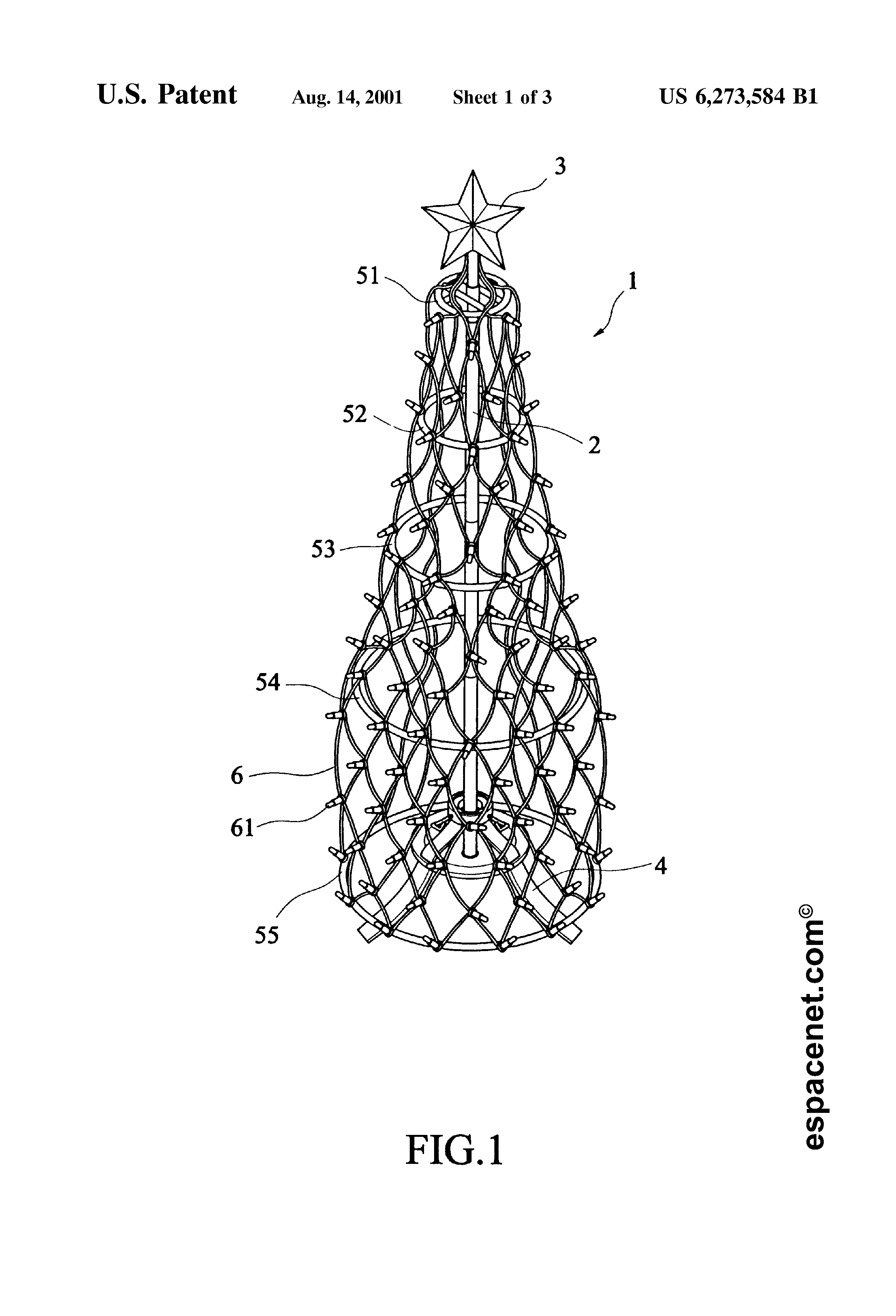
Industrial design CN205468213U, published in 2016, relates to a Christmas snowman comprising a multi-part body whose parts can be disassembled so it can be transported more easily or assembled differently.
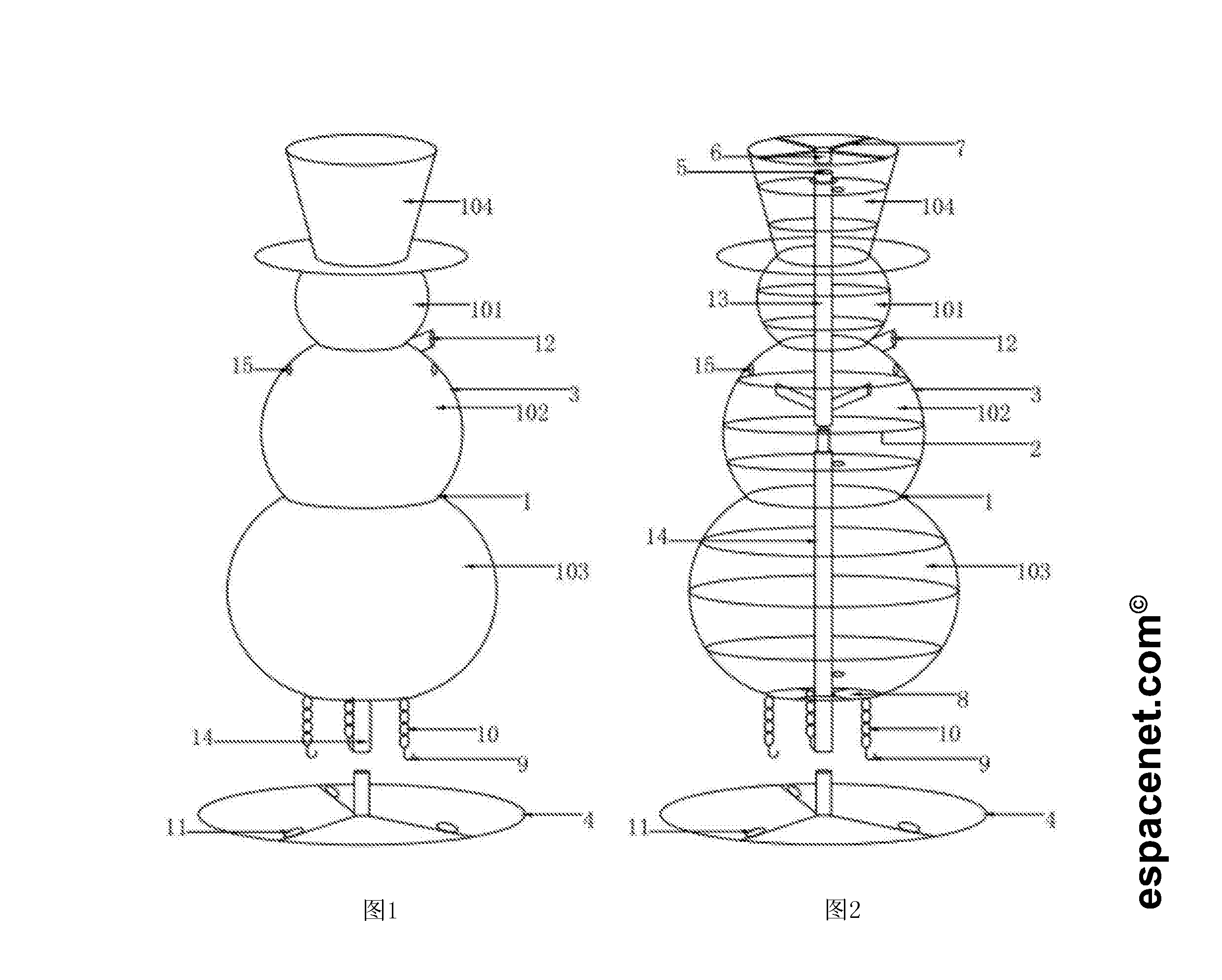
Patent application EP2468148A1, published in 2012, concerns a Christmas wreath comprising bells — perfect for decorating your front door!
This wreath claims the particular feature that the bells are not placed arbitrarily on a wire, unlike those usually found on the market.
According to the inventors, this feature makes it possible “to prevent the positioning elements [of the wreath] from turning arbitrarily.”[4]
The inventors therefore developed a “design [that] allows the bell and the wire to maintain an extremely stable connection, […]. At the same time, the invention makes it possible […] to reduce production costs and improve the stability and appearance of the hanging.”[5]
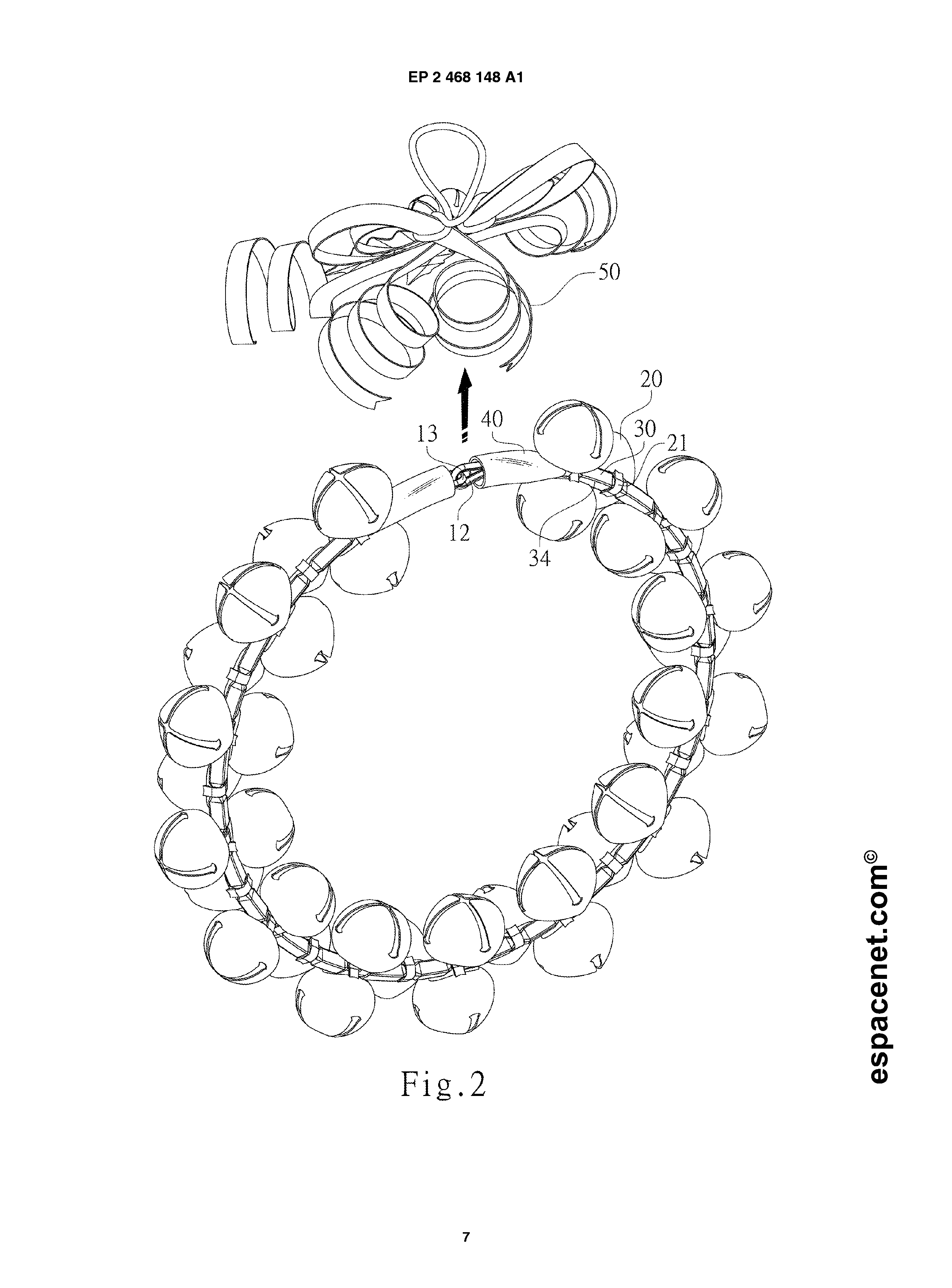
Toys
How can we talk about Christmas without talking about the toys and other gifts under the tree?
To stay current with this year’s enthusiasm around the Barbie® movie, here is the first Barbie® patent published in 1961.
Patent US3009284A describes a doll comprising a body with articulated limbs, as well as a stand to support the doll in an upright position.
But Barbie® did not stop there; further doll and accessory applications were filed in subsequent years. In addition, Mattel®, which notably owns Barbie®, diversified its products and filed trademarks and patents covering them.
In recent years, Mattel® has filed various patent and design applications for games ranging from miniature vehicles (US8162715B2, US7568753B2) to various children’s accessories (WO2004041386A1), as well as registered trademarks such as Hot Wheels® and Monster High®, not to mention other patent filings for the iconic Barbie® doll, such as US6425796B1 or EP1148918B1.
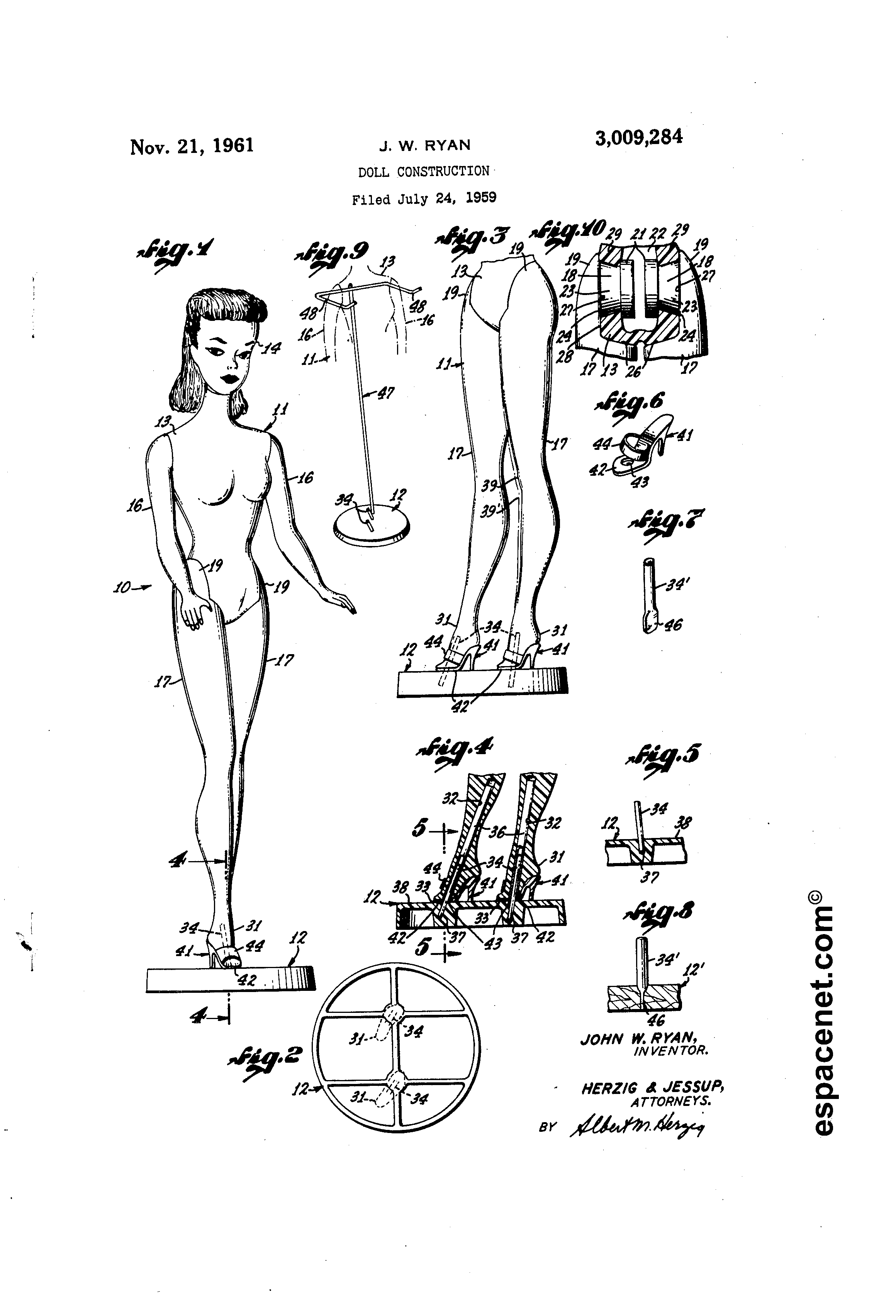
Bonus
And now that you have seen nothing escapes industrial property, a short bonus list of other applications that caught my attention during my research.
Industrial design USD906639S, published in 2021, depicts a Santa hat comprising fur around the edge of the hat as well as fur hanging in a ponytail at the back of the hat.
Industrial design CN216581864U, published in 2022, concerns a Christmas bucket, in the shape of an elf, for storing confectionery — enough to delight young and old alike.
And finally, patent US5523741A concerns a device in the shape of a Christmas stocking that makes it possible to signal Santa’s arrival visually thanks to a light source visible from outside. According to the inventors, for the invention to work, it is necessary that “When the child is asleep (on Christmas Eve), […] pull on cord 40 to activate switch 30 and, consequently, light source 18 and music generator 50 […]. Thus, when the child wakes up on Christmas Day, he will assume that the cord […] was pulled […] by Santa Claus when he entered.”[6]
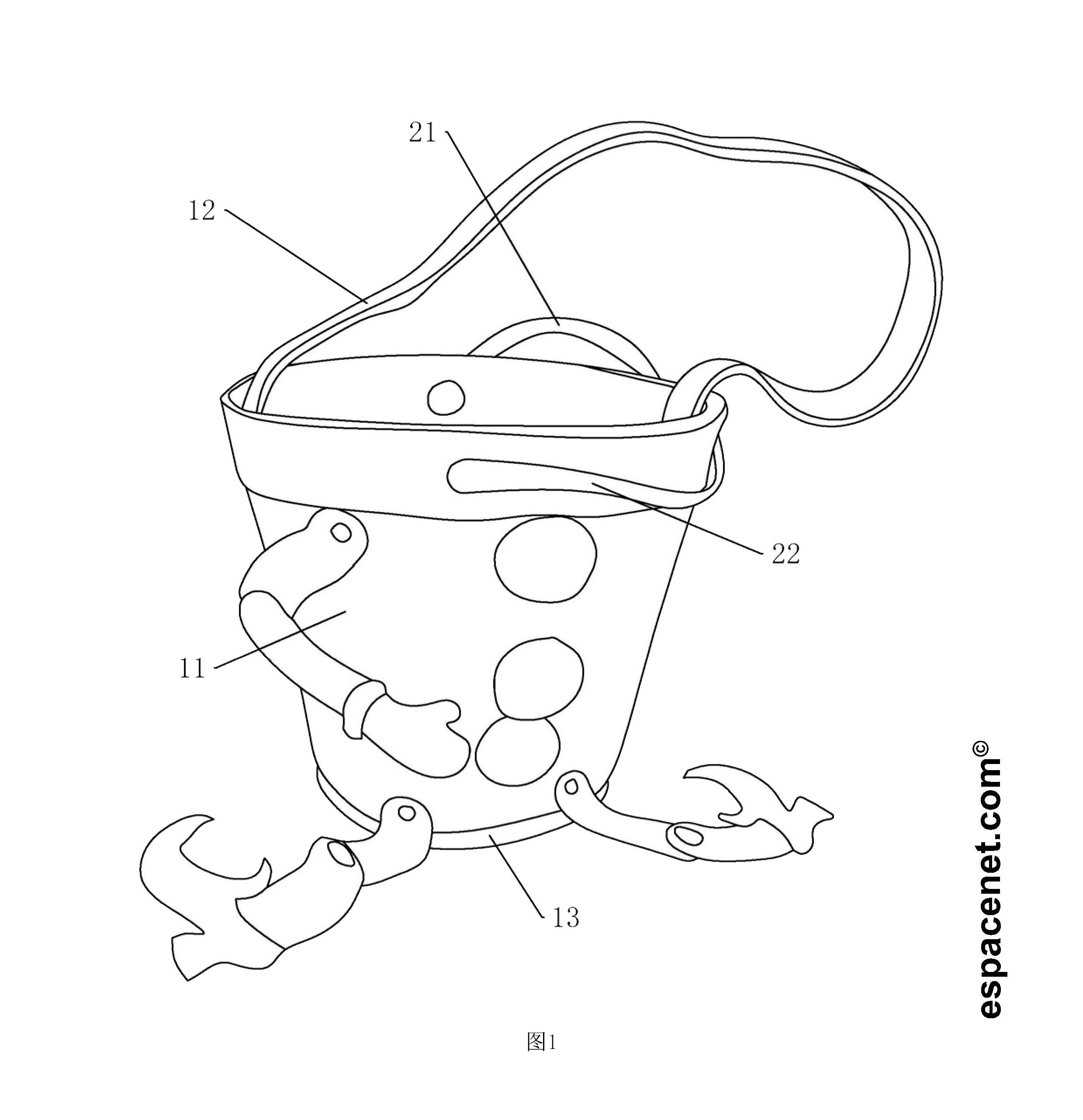
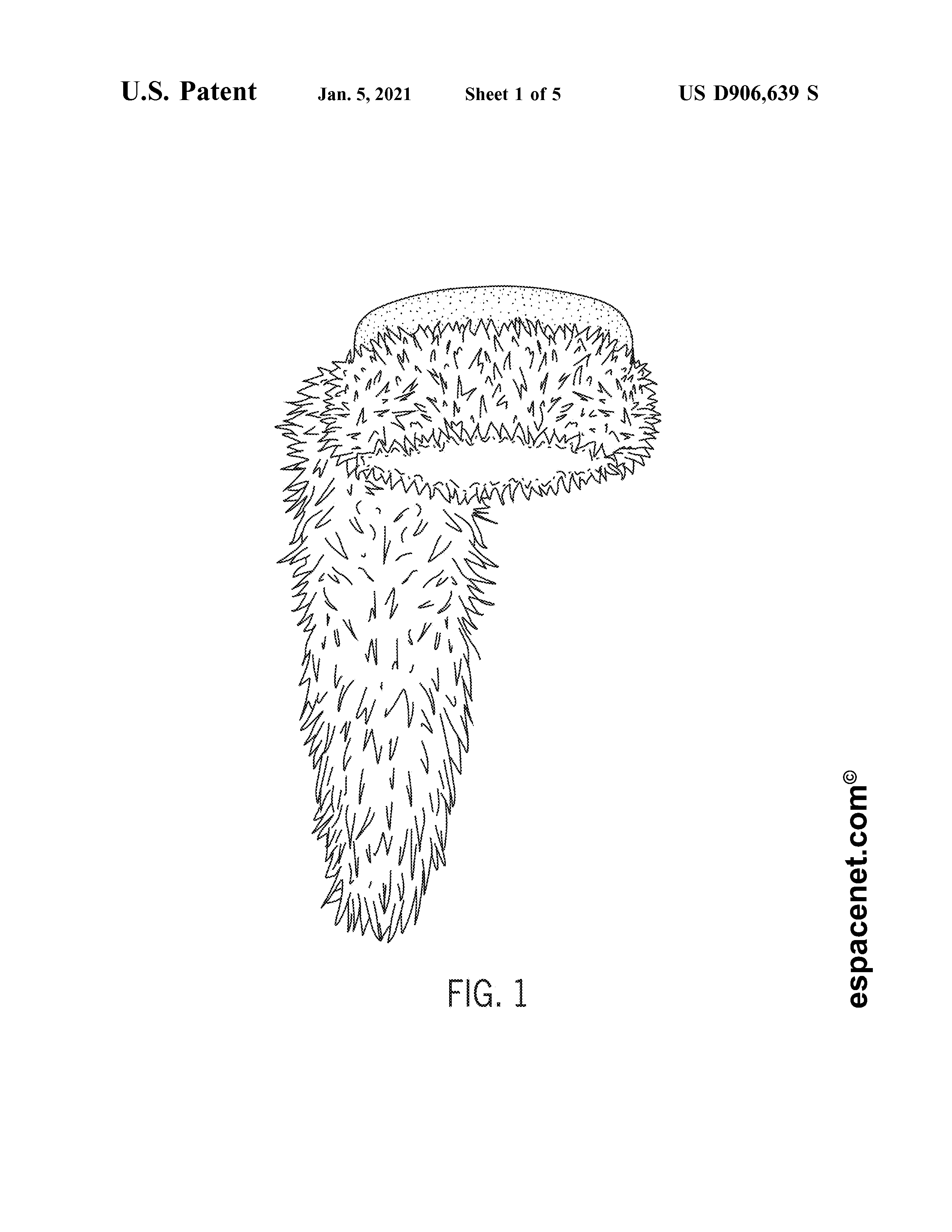
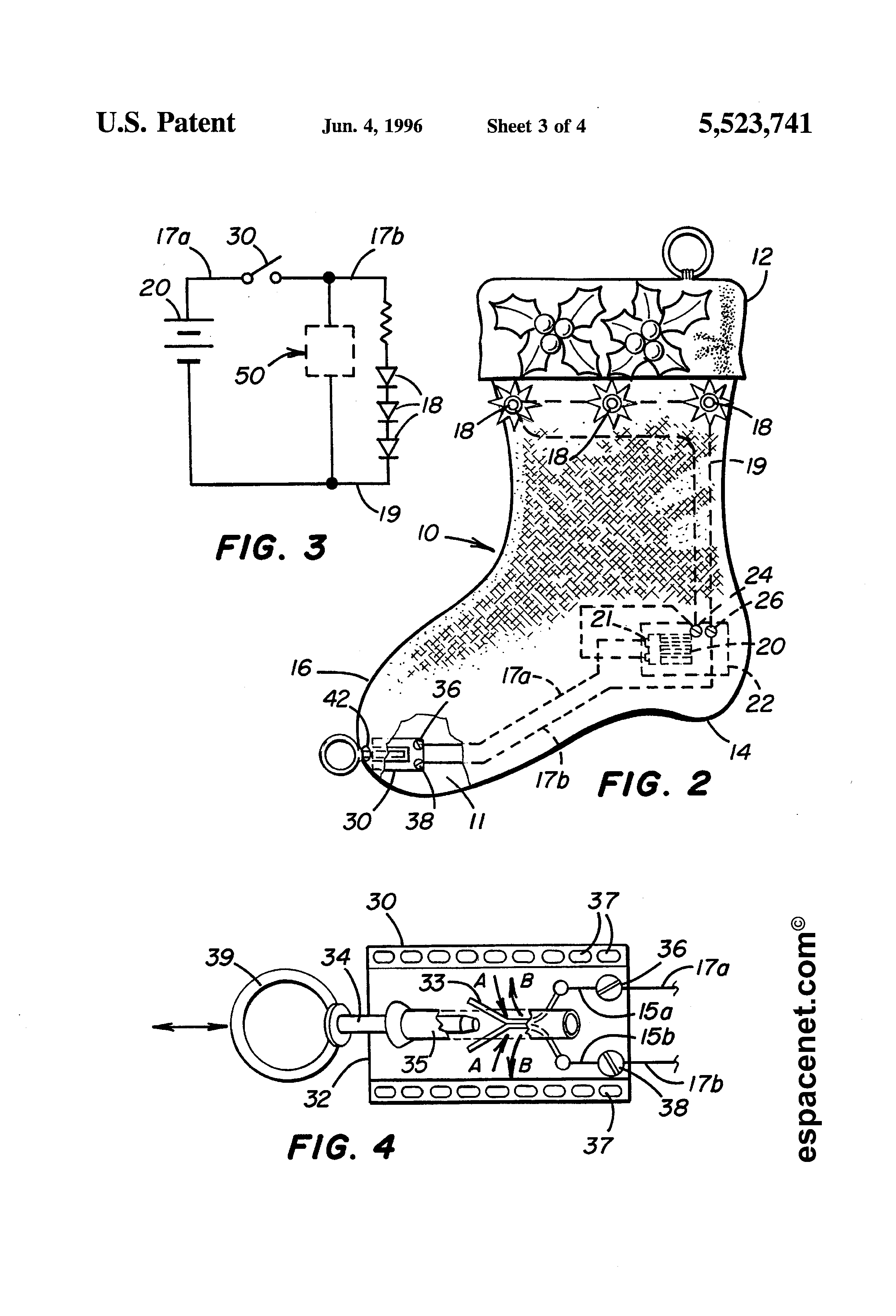
December 2023
- United States Patent and Trademark Office (USPTO).
- Translated excerpt from application WO0044265A1.
- Translated excerpt from application WO0044265A1.
- Translated excerpt from application EP2468148A1.
- Translated excerpt from application EP2468148A1.
- Translated into French from application US5523741A.
